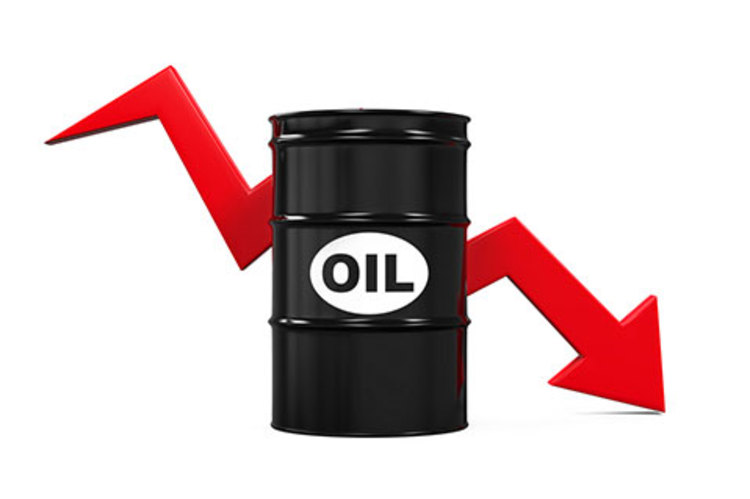
The Sunday Mail

THE Saudis may go public, Opec’s in disarray, the US is suddenly a global exporter, and shale drillers are seeking lifelines from investors as banks abandon them.
Welcome to oil’s new world order, full of stresses, strains and fractures.
For leaders gathering in Houston (this week) at the IHS CERAWeek conference — often dubbed the Davos of the energy industry — a key question is: what will break first?
Will it be the balance sheets of big US shale companies? The treasuries of Venezuela and Nigeria? The resolve of Saudi Arabia, whose recent deal with Russia to freeze output levels offered the first hint of a rethink?
After watching prices crash through floor after floor in the worst slump for a generation, the industry is eager for answers.
Insiders say it’s not too hard to visualise what markets might look like after the storm — say five years down the line, when today’s cost-cutting creates a supply vacuum that will push up prices.
But it’s what happens in the meantime that’s got them scratching their heads.
“This is a weird thing for a market analyst to say because it’s usually the opposite case, but I have more conviction in my five-year outlook than my one-year outlook,” said Mike Wittner, head of oil market research for Societe Generale SA.
“Maybe I’m letting my head get turned upside down by the last couple months.”
Seeking clarity at closed-door sessions, cocktail hours and water-coolers in Houston will be some of the industry’s biggest players, from Saudi Petroleum Minister Ali al-Naimi to Royal Dutch Shell Plc CEO Ben Van Beurden.
In a less volatile year, the long-term viability of fossil fuels might have been high on their agenda after December’s breakthrough climate deal in Paris.
But within the industry, that debate has “fallen into the abyss of US$27 oil,” said Deborah Gordon, director of the Carnegie Endowment for International Peace’s energy and climate programme.
“It seems like it’s never a good time,” she said.
“You can’t have these conversations when oil is $125 because then you can’t get it out of the ground quickly enough. And you can’t have it at US$27 because you’re just trying to survive.”
Shale Boom
US shale drillers had a key role in bringing prices that low, by adding four million barrels a day in less than four years – almost like a new Opec member materialising overnight.
Natural gas has mirrored the pattern, with surging output and plunging prices.
Now the companies are victims of their own success.
As many as 74 face significant difficulties in sustaining debt, according to Moody’s Investors Service.
The effective yield of the Bank of America Merrill Lynch High-Yield Energy Index rose to more than 21 percent on February 11, the most since it was created in 1997.
So far, shale bankruptcies have been limited to smaller outfits like Magnum Hunter Resources Corp and Swift Energy Inc.
Some investors are worried that Chesapeake Energy Corp, the second-largest natural gas producer in the US, could be the first big fish out of the water: its shares have plunged 90 percent in the past year.
The one thing the stress on companies hasn’t done is destroy production.
Engineers have found ways to lower costs and boost output at oil wells, allowing cash-starved drillers to keep enough rigs active so that output is still within five percent of last year’s high.
Opec Output
Meanwhile, on the international scene, the Saudi-Russian accord announced Tuesday, to which Venezuela and Qatar have also signed up, would cap production at January’s levels — a record high in Russia’s case, and not far off for the Saudis.
Iran isn’t a party to the plan, and its imminent return to world markets could add to the glut.
Historically the No 2 Opec producer, the Islamic Republic is preparing to ramp up exports after sanctions were lifted last month.
Brent crude failed to sustain a rally after the plan was announced, suggesting that traders don’t see any change in the underlying picture: Suddenly, there’s oil everywhere.
Without a rebound in prices, the consequences for governments – from Russia to Nigeria to Venezuela — range from grim to catastrophic.
Russia has a relatively diversified economy, but it’s still running the biggest deficit in five years, and selling assets to finance a stimulus program.
Nigeria, which depends on oil for almost all of its exports, is battling to stave off a currency devaluation and pleading for development loans to replace the missing petrodollars.
Venezuela is even worse off, with debt defaults looming and an inflation rate estimated by the IMF at 275 percent.
“You’ve got half of Opec in existential crisis as to whether they can be viable governments at this point,” said Allen Gilmer, CEO of energy consulting firm Drilling Info Inc in Austin, Texas. — Bloomberg



